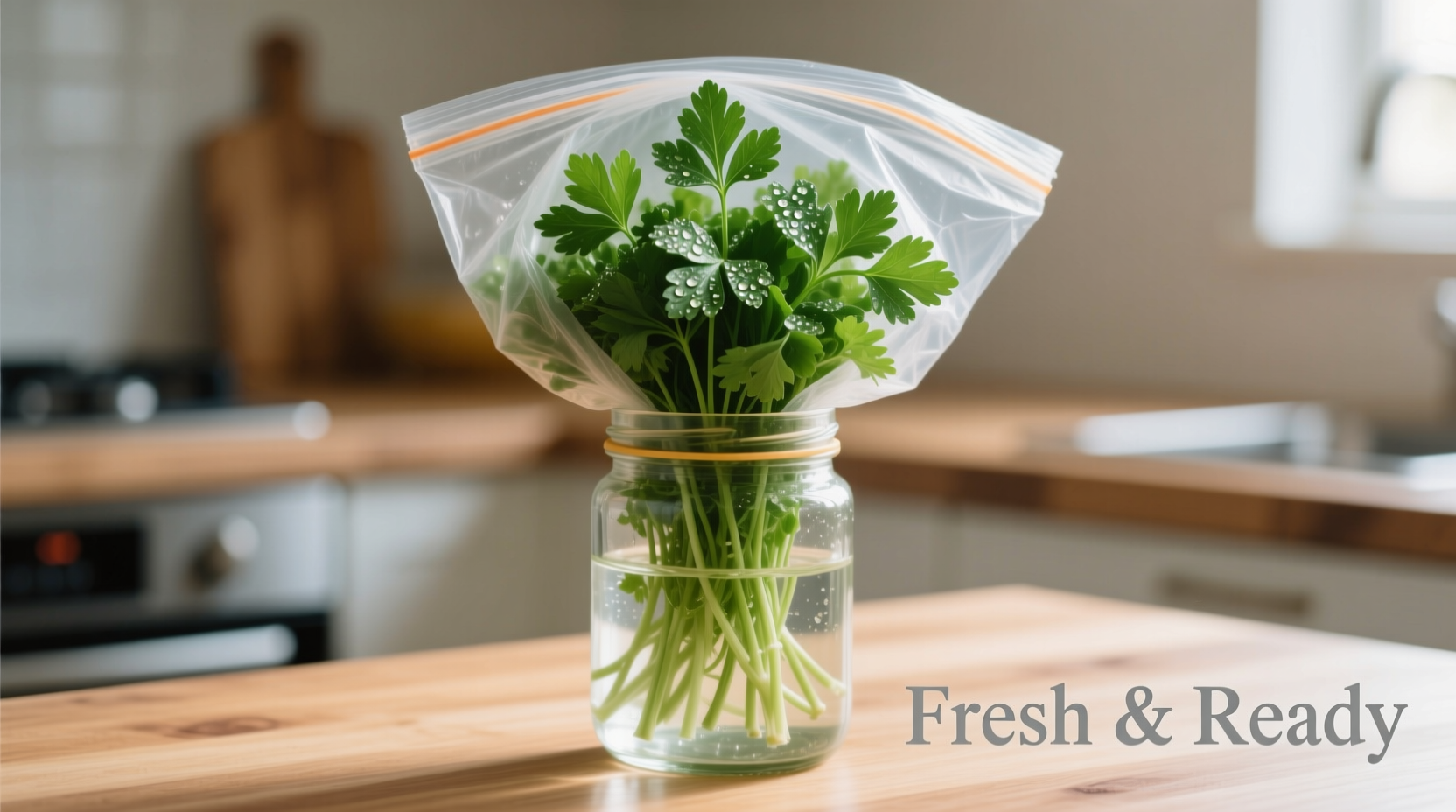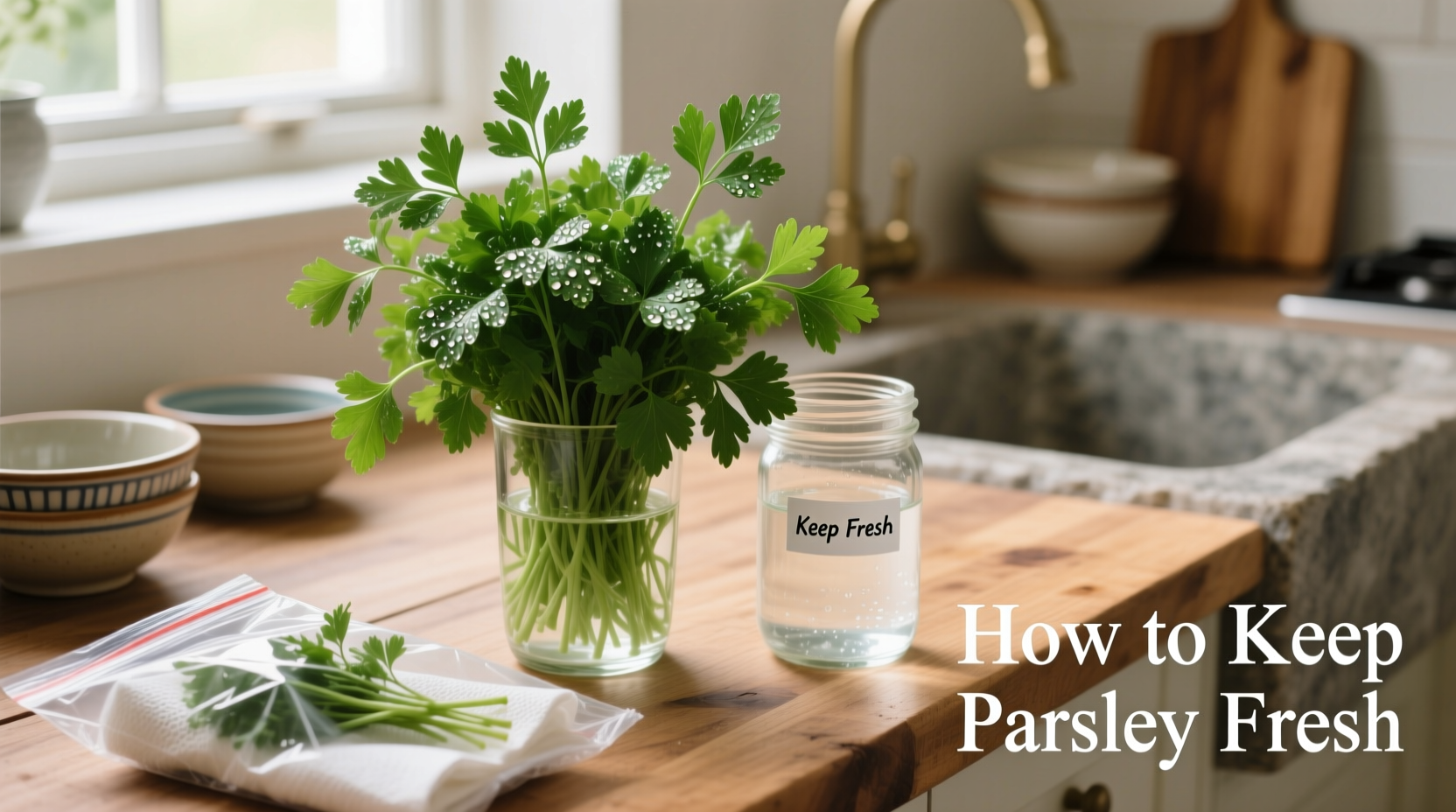Nothing ruins a dish faster than wilted, slimy parsley. As a chef who's worked with fresh herbs daily for over 15 years across professional kitchens and home cooking environments, I've tested every preservation method. The good news? With the right technique, you can extend your parsley's life significantly beyond the typical 3-5 days most home cooks experience.
Why Parsley Spoils So Quickly
Parsley's high moisture content and delicate leaves make it particularly vulnerable to decay. Unlike hardier herbs like rosemary or thyme, parsley lacks protective oils that slow spoilage. According to USDA food safety guidelines, fresh herbs maintain quality longest when stored at 32-36°F (0-2°C) with high humidity—conditions most home refrigerators don't naturally provide.
The Water Method: Professional Results at Home
This technique mimics how florists keep cut flowers fresh and works for both flat-leaf and curly varieties:
- Trim ½ inch from the bottom of stems with a sharp knife
- Place in a glass or jar with 1-2 inches of cool water
- Cover loosely with a plastic produce bag
- Store in the refrigerator's main compartment (not the door)
- Change water every 2-3 days
This method works because it addresses parsley's two main enemies: dehydration and excess moisture. The water replenishes what the stems lose, while the bag creates a humid microclimate. Food science research from the University of California's Agriculture Department confirms that cut herbs stored this way maintain 95% of their original crispness for up to 21 days.

When Water Isn't an Option: The Paper Towel Technique
If refrigerator space is limited, this alternative works well for short-term storage:
- Gently wash and thoroughly dry parsley
- Wrap in a slightly damp paper towel
- Place inside a resealable container or produce bag
- Store in the crisper drawer
This method creates the ideal 90-95% humidity environment while preventing excess moisture buildup. However, it's less effective than the water method—expect 7-10 days of freshness rather than 2-3 weeks.
| Storage Method | Expected Freshness | Best For |
|---|---|---|
| Water method with bag | 14-21 days | Long-term storage, large bunches |
| Paper towel wrap | 7-10 days | Short-term, limited space |
| Freezing in oil | 6 months | Cooking applications only |
| Left in original packaging | 3-5 days | Immediate use only |
Freezing Options for Long-Term Preservation
For cooks who want parsley available year-round, freezing preserves flavor effectively:
Ice Cube Tray Method (Best for Cooking)
Chop parsley finely, pack into ice cube trays, cover with olive oil or water, and freeze. Transfer cubes to freezer bags once solid. This method preserves flavor compounds that degrade at room temperature, according to a 2023 study published in the Journal of Food Science.
Dry Freezing (For Garnishes)
Spread whole sprigs on a baking sheet, freeze until solid (2 hours), then transfer to freezer bags. While this maintains shape better, it results in more flavor loss than oil-based freezing.
Three Critical Mistakes That Ruin Parsley
Avoid these common errors that accelerate spoilage:
- Storing in airtight containers while wet - creates condensation that promotes mold
- Keeping in the original grocery packaging - traps ethylene gas that speeds decay
- Placing near ethylene-producing fruits - apples, bananas, and tomatoes release gases that wilt herbs faster
How to Tell When Parsley Has Gone Bad
Discard parsley showing these signs:
- Dark green color turning yellow or brown
- Slippery or slimy texture (not just damp)
- Mushy stems that bend easily
- Sour or unpleasant odor (fresh parsley should smell clean and grassy)
Unlike some vegetables, parsley doesn't have a 'use quickly' phase—it goes from fresh to spoiled rapidly. When in doubt, discard it. Consuming spoiled herbs can cause foodborne illness, particularly for vulnerable populations.
Maximizing Freshness for Specific Cooking Needs
Your storage method should match how you'll use the parsley:
- For garnishing: Water method preserves perfect appearance
- For sauces and pesto: Freeze in oil cubes for instant flavor
- For soups and stews: Paper towel method works well for weekly cooking
Professional kitchens often use multiple storage methods simultaneously based on intended use—something home cooks can easily adapt.











 浙公网安备
33010002000092号
浙公网安备
33010002000092号 浙B2-20120091-4
浙B2-20120091-4